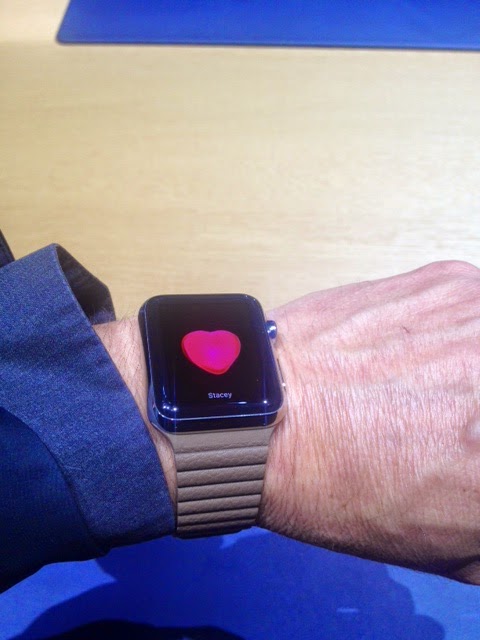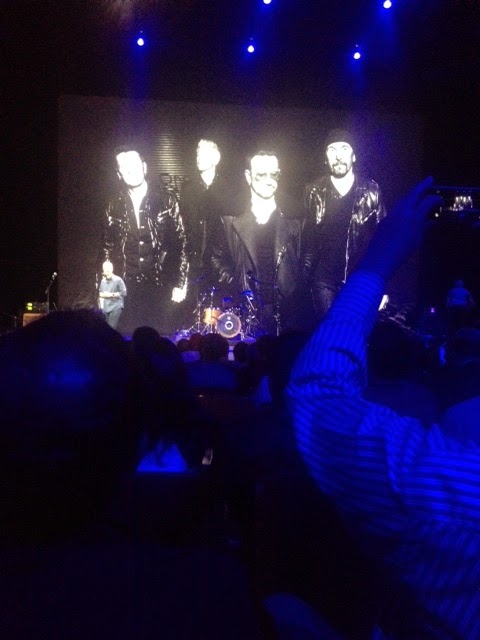The Apple Platform for Wellness Arrives
 John D. Halamka, MDToday I’m sitting at the Flint Center in Cupertino where Steve Jobs introduced the first MacIntosh 30 years ago. Who can forget the iconic commercial “why 1984 won’t be like 1984”? It was the year I graduated from college and the year I married my wife Kathy.
John D. Halamka, MDToday I’m sitting at the Flint Center in Cupertino where Steve Jobs introduced the first MacIntosh 30 years ago. Who can forget the iconic commercial “why 1984 won’t be like 1984”? It was the year I graduated from college and the year I married my wife Kathy.
Now, 30 years later, we’re on the cusp of a different kind of revolution - the consumerization of healthcare middleware that gathers data about your body/activity from multiple sensors and consolidates it into a secure container on your personal smartphone. No cloud storage is used. In fact, Apple has specifically changed its policies so that health data is never replicated to iCloud. Data remains on your device under your control. Apple does not specifically provide a function to transmit data off the device. The intent of Healthkit is that it serves as middleware, consolidating data and providing a container to share data with other apps that you specifically trust.
 Credit-John D. Halamka, MDFor example, Beth Israel Deaconess, could create a Patientsite application that you trust to access healthcare data on your phone. Your care team could monitor this data for meaningful variations and intervene via a home care visit or telemedicine connection when appropriate.
Credit-John D. Halamka, MDFor example, Beth Israel Deaconess, could create a Patientsite application that you trust to access healthcare data on your phone. Your care team could monitor this data for meaningful variations and intervene via a home care visit or telemedicine connection when appropriate.
For example, if Congestive Health Failure patients have significant short term weight gain, a visiting caregiver could evaluate the situation and adjust the patient’s diuretic dose. Recently, a donor committed significant funds to the development on an app that will do just that. We hope to have a running prototype in 2015.
 Credit-Dr. John D. Halamka, MDNot only did Apple introduce the iPhone 6/iPhone 6 Plus (pictured above) as highly capable mobile computers, they also introduced secure e-commerce features (Apple Pay) and the Apple Watch.
Credit-Dr. John D. Halamka, MDNot only did Apple introduce the iPhone 6/iPhone 6 Plus (pictured above) as highly capable mobile computers, they also introduced secure e-commerce features (Apple Pay) and the Apple Watch.
The Apple Watch includes motion sensors (accelerometer, gyroscope), barometric pressure (for elevation change), and heart rate. It includes a touch screen that can discern a swipe from a press. It includes haptics that can provide tactile feedback such as reminders to take medication or change course while running a pre-determined route. The Apple Watch communicates with the iPhone for GPS data and LTE (4G wireless). Here's my arm, my heartbeat, and my black Kevlar shirt.
Although Apple has introduced fitness applications with the Watch and iOS8, the greatest potential for the suite of products introduced today is the development ecosystem, enabling academia, industry, and government to innovate. Now that all the devices in your home consolidate data about you in one secure container under your control, developers can focus on creative analytics, visualizations and alerts/reminder and not the struggle to interface heterogeneous devices.
 Credit-Dr. John D. Halamka, MDU2/Bono arrived on stage to play a new single. A few minutes afterwards, the entire album was released to 500 million iTunes users for free. What is the significance for healthcare? The fact that Apple can reach 500 million consumers in a moment is faster dissemination of innovation than any change management program that healthcare IT stakeholders could conceive.
Credit-Dr. John D. Halamka, MDU2/Bono arrived on stage to play a new single. A few minutes afterwards, the entire album was released to 500 million iTunes users for free. What is the significance for healthcare? The fact that Apple can reach 500 million consumers in a moment is faster dissemination of innovation than any change management program that healthcare IT stakeholders could conceive.
It’s an exciting time, the Perfect Storm for Innovation, that I’ve written about in the past. Apple created an enormous white pavilion next to the Flint Center for the demonstration of these products. I spent the afternoon using the technology they demonstrated.
Now the fun begins, changing the face of healthcare with new tools available to payers, providers, and patients over the next year.
| The Apple Platform for Wellness Arrives was authored by Dr. John D. Halamka and published in his blog, Life as a Healthcare CIO and it is reprinted by Open Health News under the terms of the Creative Commons Attribution-Noncommercial-Share Alike 3.0 United States License. The original post can be found here. |
- Tags:
- Apple HealthKit
- Apple Pay
- Apple Watch
- barometric pressure
- Beth Israel Deaconess
- change management program
- consumerization of healthcare middleware
- Cupertino
- development ecosystem
- fitness applications
- Flint Center
- haptics
- health data
- healthcare data
- healthcare IT stakeholders
- heart rate
- iCloud
- iPhone 6
- mobile computers
- motion sensors
- Perfect Storm for Innovation
- secure e-commerce features
- Steve Jobs
- touch screen
- Login to post comments